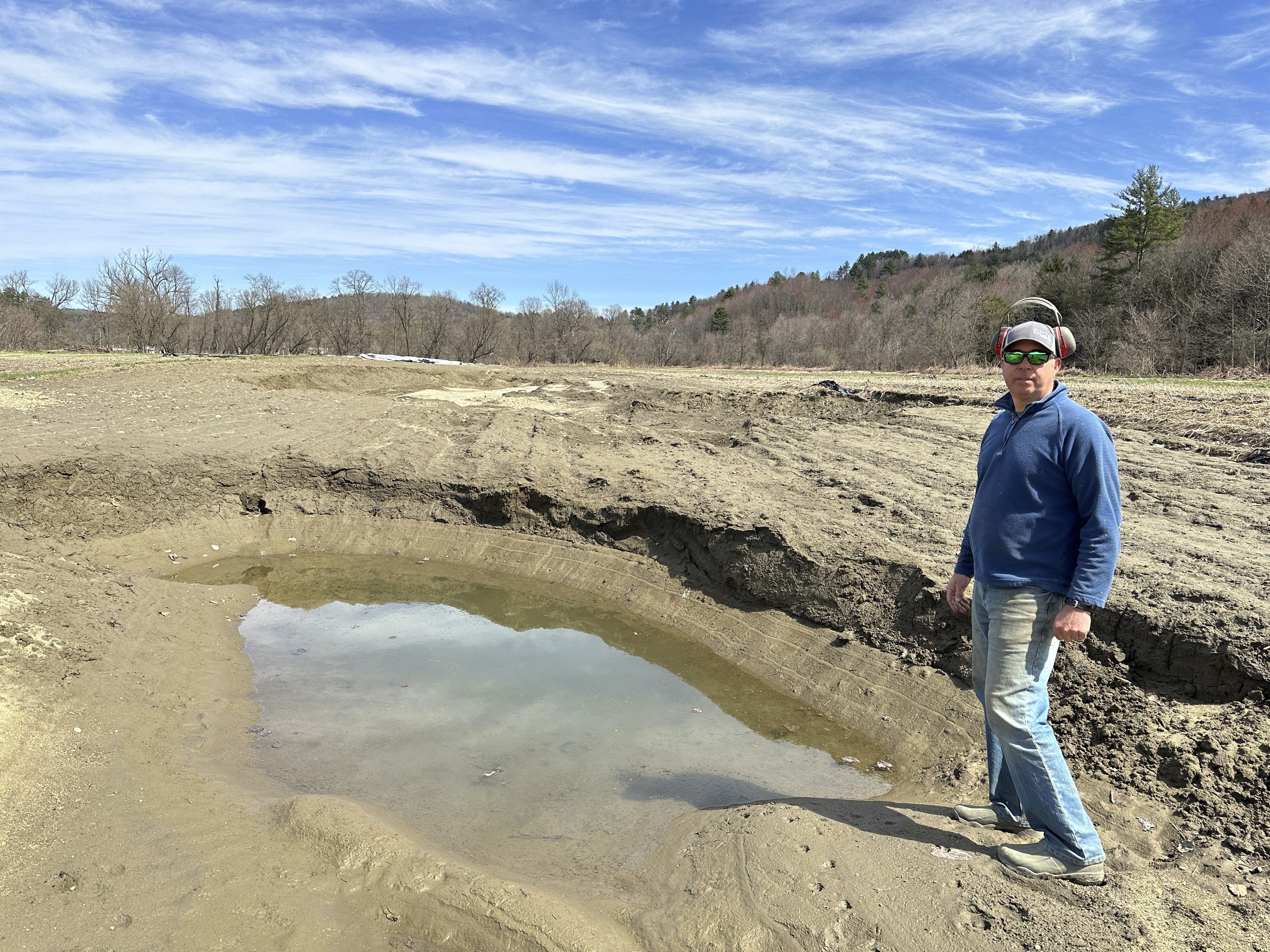New research into the overall health of Vermont’s moose population aims to help biologists better understand the state’s largest wild animal.
“We care about all wildlife in the state of Vermont,” said Mark Scott, the director of wildlife for the Vermont Fish and Wildlife Department. “Anything we can do to better understand any wild animal in the state, we should be doing.”
Moose have been increasingly under assault from a tiny threat: winter ticks.
Some moose may have tens of thousands of the parasites feasting on their blood, Scott said, weakening them, and causing them to rub their hair off on trees, which leaves them freezing.
Moose biologists have been really concerned in recent years about climate change, saying shorter, milder winters only help the ticks that attack the big animals.
“These winters we've had, without a lot of snow cover, have been worrisome for us,” said Louis Porter, the commissioner of the Vermont Fish and Wildlife Department.
Porter said while there has been no discovery of an effective method, such as insecticides, for directly controlling tick populations, there is some evidence that cold, snowy winters can make survival harder for the ticks that target moose.
Vermont
The latest news from around the state
Now, Porter wants to learn more about several impacts to overall moose health and mortality from a new study, funded with federal grant money raised through the sale of firearms and ammunition.
This month, a team of contractors who specialize in the safe capture of wildlife scanned Vermont's rural Northeast Kingdom from helicopters looking for moose.
The contractors from Native Range briefly tranquilized 60 animals and placed GPS tracking collars on them, the Fish & Wildlife Department explained.
The work will help researchers study the movements of moose, see how many moose calves survive until adulthood, learn why any of the animals die, what predators—such as coyotes—may have killed them, and enable biologists to consider ways ticks have stressed the animals.
Biologists will also examine whether female moose are reproducing successfully, the department said, and look at where the young animals travel.
Similar research is also underway in New York, New Hampshire, and Maine, the Fish and Wildlife Department noted.
“We think that the decision by Vermont's biologists to reduce the moose density in the state, while made for other reasons, may actually be helping us have a less-severe impact from the ticks than they're having in New Hampshire and Maine,” Porter told necn.
The decision to manage the state’s moose population was made out of concern for habitat and factors such as vehicle crashes with moose, Scott said.
The density of Vermont’s moose population has been brought down through hunting: from more than 5,000 animals 15 or 20 years ago, to about 2,200 now. A target figure for the moose herd is roughly 3,000 animals, Porter said, noting that different regions of the state are already at their local goal populations.
Porter said his department expects to stay conservative with issuing moose hunting permits as it studies what’s the best balance for the animals’ habitat, health, and people’s risk for interactions — such as dangerous car crashes.
“We would never issue permits that are jeopardizing a population,” Porter said, noting that when the decision on a number of fall moose hunting permits is made later this year, the figure is likely to be low, and only to allow for the harvesting of male moose.
That new research project runs through 2019.



